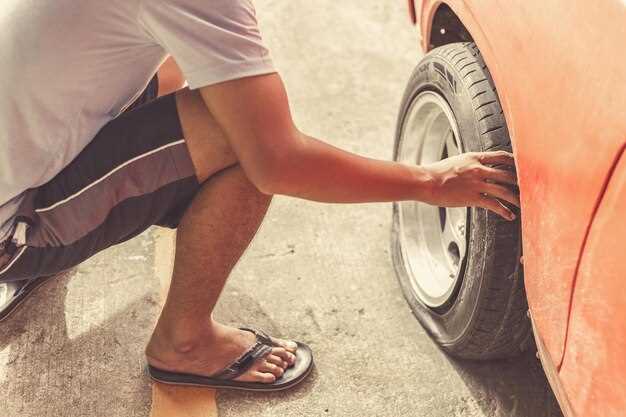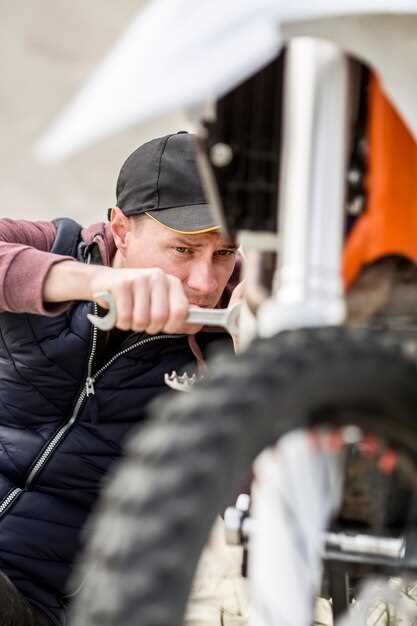
When it comes to achieving optimal performance on the racetrack, understanding how to properly break in new racing tires is crucial. The initial phase after mounting new tires sets the foundation for their longevity, grip, and overall effectiveness during a race. A well-executed break-in can mean the difference between a lackluster performance and an exhilarating victory.
New racing tires often come with a release agent that can reduce their grip during the initial runs. Stripping this outer layer is essential, as it allows the rubber to reach its full potential. The process of breaking in racing tires involves gentle driving techniques that gradually enhance tire performance without compromising safety. Adopting the right methods ensures that the tires achieve optimal drag characteristics, which is vital for acceleration and cornering.
In this article, we will delve into the most effective strategies for breaking in new racing tires. From gradually increasing speed to executing controlled movements, every aspect plays a role in ensuring maximum tire performance. By adhering to these techniques, you’ll pave the way for an incredible racing experience–starting with the very first lap.
Step-by-Step Guide to Initial Heat Cycling for New Tires
Proper heat cycling is essential for new racing tires to maximize grip and enhance overall performance. Follow these steps to effectively prep your tires through the heat cycling process.
Step 1: Preparation – Start by ensuring your tires are properly mounted and inflated to the manufacturer’s recommended pressure. This is crucial for effective heat distribution. Inspect the tires for any visible damage or debris that could affect performance.
Step 2: Initial Strip – Begin the heat cycling by making a few gentle laps around the track. Focus on maintaining a steady, moderate speed. This initial strip helps to gradually increase the tire temperature without excessive wear or risk of overheating.
Step 3: Gradual Drag – After the initial laps, it’s time to gradually drag the tires through more aggressive corners. Increase your speed while ensuring you’re not overworking the tires. Allow them to heat up further while still being mindful of your tire pressure and grip levels.
Step 4: Extended Heat Cycle – Once the tires are warmed up, continue with a longer session at race pace. This will help the tire rubber to further bond and provide a stable temperature. Aim for consistent laps to ensure the tires maintain their integrity while they continue to heat and settle.
Step 5: Cool Down – After completing several laps, gradually reduce your speed and allow the tires to cool down naturally. Avoid sudden stops or harsh braking, as this may lead to uneven cooling and affect the tires’ performance.
Step 6: Final Check – After the heat cycling process, check the tire pressures once again. They may have increased due to the heat. Adjust them as needed before your next practice or race session. Make sure to inspect the tire surfaces for any unusual wear patterns or signs of damage, indicating whether the initial heat cycling was successful.
By following this step-by-step guide, you’ll ensure your new racing tires develop optimal performance characteristics, providing you with the grip and stability required for competitive racing.
Best Practices for Tire Pressure Adjustments Before Drag Runs

Adjusting tire pressure is crucial for achieving optimal performance on the drag strip. The right pressure can significantly influence traction, stability, and overall speed during runs. Before heading out to the strip, consider the following best practices for tire pressure adjustments.
First, start by checking the manufacturer’s recommended tire pressure for your specific racing tires. Typically, this information can be found on the sidewall of the tire. However, these recommendations may not always apply directly to drag racing conditions, so adjustments may be necessary.
Next, experiment with lower tire pressures to enhance grip during launches. Lowering the pressure can increase the tire’s contact patch with the pavement, allowing for better grip on the strip. A common starting point is to reduce the pressure by 2-4 psi from the manufacturer’s recommendation, but it’s essential to test different levels to find the sweet spot for your setup.
It’s advisable to prep your tires by warming them up before making final pressure adjustments. Heated tires tend to expand, so checking pressure after they reach operating temperature provides a more accurate measurement. Additionally, warming up the tires can also help achieve better traction during the initial runs.
Remember to monitor tire pressure throughout the day of racing. Changes in ambient temperature can lead to fluctuations in tire pressure, impacting performance. Regularly adjusting tire pressure according to track conditions and temperature can maximize your vehicle’s potential.
Lastly, always ensure your tires are inflated equally on both sides to maintain balance. Uneven tire pressure can lead to poor handling and unpredictable behavior during high-speed runs down the drag strip. Consistency in tire pressure is key to ensuring reliable and repeatable performance.
Techniques for Optimizing Tire Grip During Launch on the Strip

Achieving maximum tire grip during a launch on the strip is crucial for optimizing performance and ensuring a competitive edge. One of the first techniques involves selecting the right tire compound that is specifically designed for drag racing. Softer compounds generally offer a better grip, enhancing acceleration, while maintaining the ideal temperature is essential for achieving optimal traction.
Adjusting tire pressure is another critical factor. Lowering tire pressure increases the contact patch, allowing more surface area of the tire to engage with the strip. However, this must be balanced, as excessively low pressure can lead to tire deformation and loss of control. Experimentation to find the perfect balance is often necessary, depending on track conditions and vehicle setup.
Proper warming of the tires before the launch is vital for maximizing grip. Engaging in a burnout helps to heat the tires and remove any debris, ensuring that the surface is clean. It’s important to monitor the duration and intensity of the burnout to avoid overheating, which can negatively impact performance.
Another technique to consider is adjusting rear suspension settings. A stiffer rear suspension can help transfer weight during launch, allowing the tires to grip better. However, this must be finely tuned, as too stiff of a setup may hinder weight transfer and reduce grip instead.
Finally, understanding the drag strip surface is essential. Different tracks may have varying textures and compositions, affecting how tires interact with the surface. Taking the time to analyze these conditions and making necessary adjustments to tire choice and pressure can lead to significant improvements in grip during launch.



